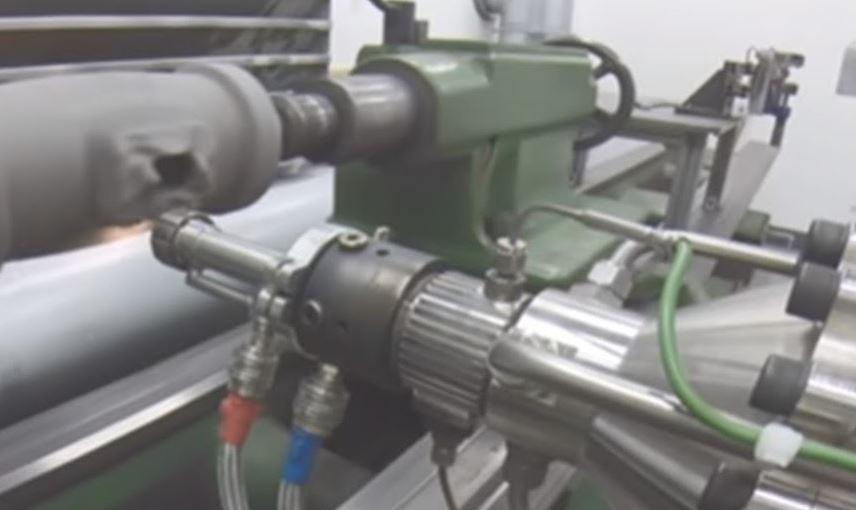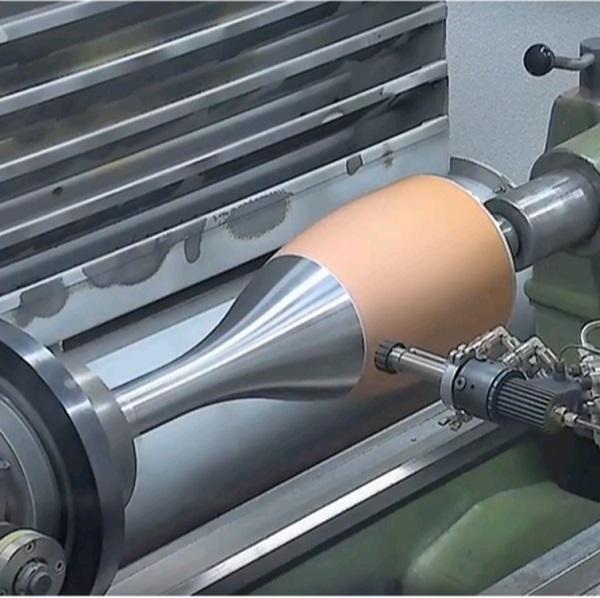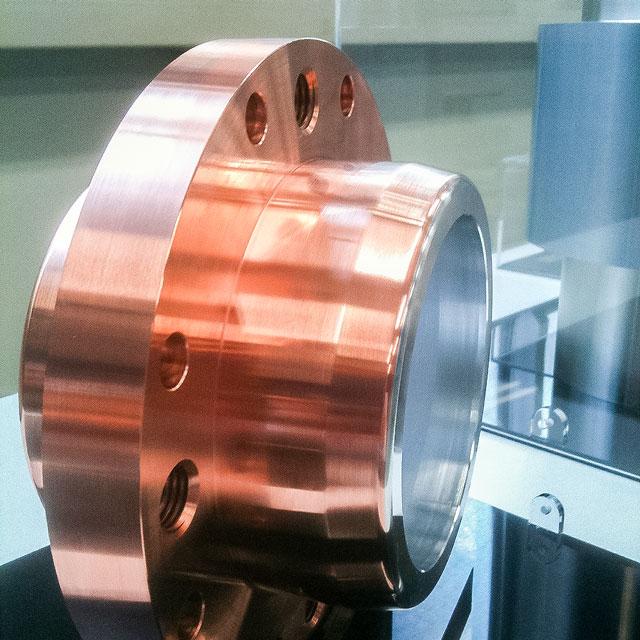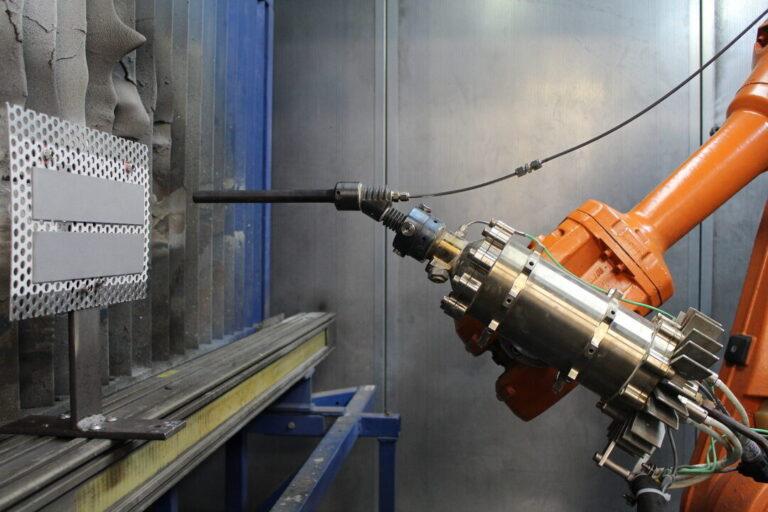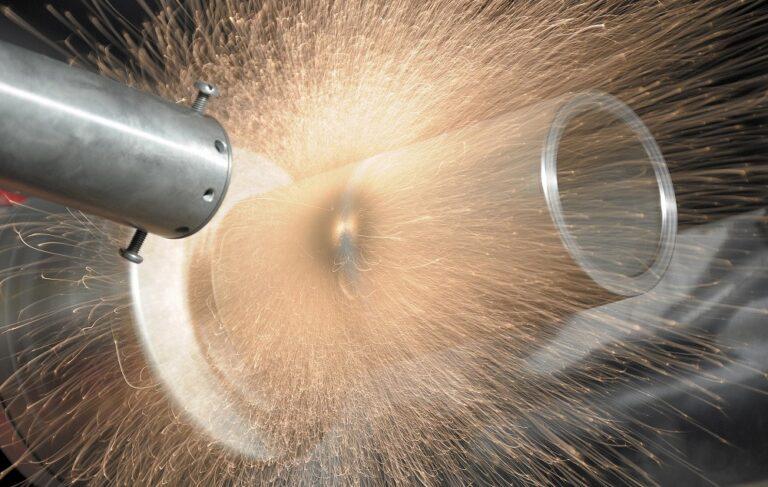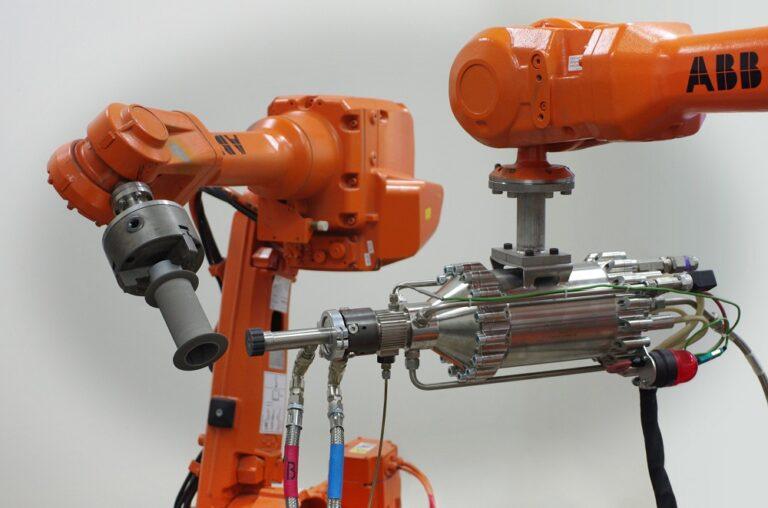Introduction
The cold spray process is a modern coating technology that utilizes kinetic energy to deposit fine metallic particles onto a substrate. Unlike traditional thermal spray methods, cold spray does not involve high-temperature processes, making it suitable for coating temperature-sensitive materials. Particles are accelerated by a compressed gas bond to the substrate through deformation and welding. The blog post provides an overview of the cold spray process, including fundamentals, equipment, applications, and future.
A brief overview of the Cold Spray Process
Cold spray technology was first developed in the 1980s by the Russian Institute of Aviation Materials. Since then, it has gained significant attention as a modern coating technology that can deposit high-quality coatings without the use of high-temperature processes. Cold spray is a solid-state process that involves the acceleration of metallic particles to high velocities using compressed gas. The particles undergo plastic deformation and cold welding upon impact with the substrate, resulting in the formation of a dense and adherent coating. With its numerous advantages and potential applications, cold spray technology continues to advance and revolutionize the coating industry.
Importance and applications of Cold Spray Process
Cold spray technology has gained significant importance in recent years due to its unique properties and potential applications. Cold spray can deposit high-quality coatings without the use of high-temperature processes, making it suitable for coating temperature-sensitive materials. The ability to deposit coatings at low temperatures also reduces the risk of thermal damage to the substrate and minimizes oxidation and porosity. The cold spray has numerous industrial and commercial applications, including aerospace, defense, and medical industries. It can deposit coatings on various substrates, including polymers, composites, and ceramics, which are difficult to coat using traditional thermal spray methods. Additionally, cold spray technology offers cost and environmental benefits by reducing material waste and energy consumption. Cold spray technology revolutionizes the coating industry with its wide range of applications and advantages, and experts expect it to expand into new sectors in the future.
Purpose and scope of the blog post
The purpose of this blog post is to provide a comprehensive overview of the cold spray process and its applications. We will explore the fundamentals of cold spray, including the principles, equipment, materials, and process variables. We will also discuss the advantages and potential applications of cold spray technology, along with its challenges and future directions. This post explains the cold spray process. It suits readers with different backgrounds. By the end, readers will understand the technology. It’s important in the coating industry.
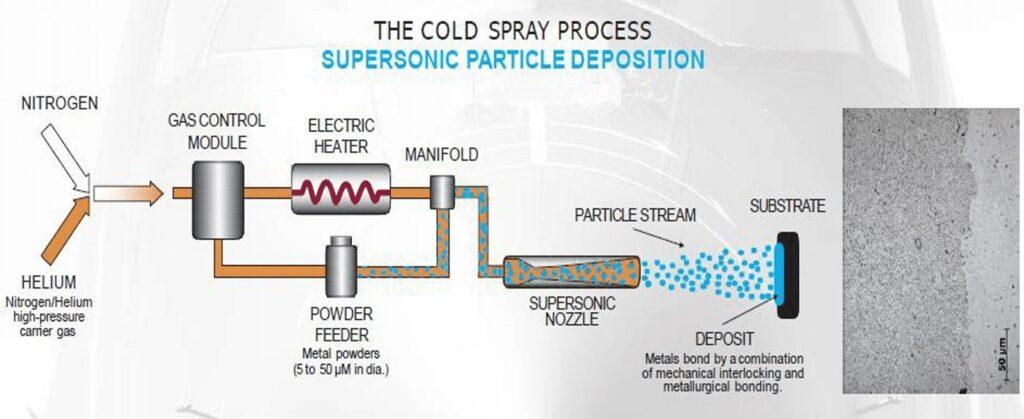
Fundamentals of Cold Spray Process
The cold spray process accelerates metallic particles using compressed gas. It relies on plastic deformation and cold welding for coating. No melting or vaporization is involved. Parameters include particle velocity, temperature, gas type, pressure, and nozzle geometry. These affect coating morphology and properties. Understanding the fundamental principles of cold spray is essential for optimizing the process and achieving high-quality coatings with desired properties.
Principles of cold spray deposition
The physical principles behind cold spray deposition involve the acceleration of metallic particles to high velocities and their impingement onto a substrate, leading to plastic deformation and adhesion. The kinetic energy of the particles determines the process, which relies on gas pressure, temperature, and nozzle geometry. To achieve supersonic velocities, the gas typically compresses nitrogen, helium, or argon, and expands while being heated. When the particles collide with the substrate, they undergo plastic deformation and cold welding due to high strain rates and localized heating. The bonding mechanisms involve interparticle and particle-substrate interactions, such as mechanical interlocking, diffusion, and solid-state bonding. The key to successful cold spray deposition lies in the control of process variables to achieve a dense and uniform coating with desired properties. Understanding the physical principles of cold spray deposition is crucial for optimizing the process and developing new applications.
Explanation of adiabatic heating and plastic deformation
During the cold spray process, the interaction of the sprayed particles with the substrate transforms their kinetic energy into thermal energy, leading to a rapid increase in temperature. This phenomenon is known as adiabatic heating. In turn, this causes the substrate and the particles to deform plastically, making it easier for the two to bind. To optimize the cold spray process and produce high-quality coatings, one must understand the concepts of adiabatic heating and plastic deformation.
Comparison with other thermal spray techniques
Compare cold spray with other techniques. Examples: plasma spray, flame spray, HVOF spray. Cold spray doesn’t need high temps. Also, no melting of powder particles. This leads to less oxidation. And better material properties. Additionally, cold spray can deposit a wider range of materials, including polymers and composites, with minimal degradation of their properties. Cold spray is also a more environmentally friendly technique as it does not produce toxic fumes or emissions like plasma spray or flame spray. Overall, the cold spray has shown to be a promising alternative to traditional thermal spray techniques in various industrial applications.
Equipment and Materials
The cold spray process requires specialized equipment and materials. The equipment typically consists of a high-pressure gas source, a powder feeder, and a spray nozzle. The gas source provides the pressure required to accelerate the powder particles to supersonic speeds. The powder feeder accurately meters the powder into the gas stream, while the spray nozzle shapes and directs the spray. Different types of gas sources and powder feeders can be used depending on the specific application. In the following paragraphs, we will discuss each component of the equipment in detail and explore the different materials used in cold spray deposition.
Description of the cold spray equipment and components
Cold spray equipment includes a gas source, powder feeder, heating system, nozzle, and control system. The gas source accelerates powder particles. The powder feeder delivers powder into the gas stream. The heating system preheats the gas to a desired temperature and provides additional heat for adiabatic heating during the process. The nozzle controls the gas flow and directs it toward the substrate, where the particles impact and adhere. The control system regulates the parameters of the process, such as gas pressure, powder feed rate, and temperature. The equipment can vary in size and complexity depending on the specific application and production requirements.
Types of cold spray guns and their features
Cold spray guns can be classified into two main types: high-pressure and low-pressure guns. High-pressure guns use high-pressure gas, such as nitrogen or helium, to accelerate the particles and create the spray stream. They are often used for high-production applications and for spraying dense materials. Low-pressure guns, on the other hand, use low-pressure gas, such as compressed air, to accelerate the particles. They are often used for smaller-scale applications and for spraying more delicate or temperature-sensitive materials. Some cold spray guns also feature various nozzle sizes and shapes, allowing for more control over the spray pattern and particle velocity.
Overview of the powder feeders and gas compressors
In the cold spray process, powder feeders and gas compressors are essential equipment. The cold spray gun uses powder feeders. Feedstock powder is supplied via these feeders. High-pressure gas accelerates powder particles. Gas compressors are used to generate this high-pressure gas. Several powder feeder types exist:
- Auger feeders
- Venturi feeders
- Rotary feeders
Each type has its own pros and cons.
Similarly, designers create gas compressors for providing high-pressure gas at a constant rate for the cold spray process. The cold spray process commonly uses positive displacement compressors, centrifugal compressors, and reciprocating compressors. The selection of the powder feeder and gas compressor depends on the specific application and the properties of the material that will be deposited.
Characteristics of the materials used in the cold spray process
Cold spray process can be used to deposit a wide range of materials including metals, polymers, ceramics, and composites. The properties of these materials can vary significantly, and their suitability for cold spray deposition depends on their melting point, particle size, and other factors. Cold spray commonly uses metals like copper and aluminum, which have low melting points, high thermal conductivity, and good ductility. It is also possible to deposit polymers, including thermoplastics and thermosets, using cold spray. Ceramic materials like oxides, nitrides, and carbides can also be deposited with good adhesion and density. In addition, cold spray can deposit composites like metal matrix composites. Post-processing techniques such as heat treatment and surface finishing can further improve the properties of the deposited materials.
Cold Spray Process Variables
Cold spray process variables:
-powder particle size and morphology
-powder feed rate
-gas temperature and pressure
-nozzle diameter and shape
-stand-off distance
-substrate material and surface preparation
-process gas type and flow rate.
These variables can significantly affect the quality, density, and adhesion of the coatings produced by the cold spray process. Proper optimization and control of these variables are necessary to achieve the desired coating properties and performance.
Critical process parameters for successful cold spray
Successful cold spray requires attention to several critical process parameters. These include the choice of appropriate gas temperature and pressure, powder particle size, flow rate and temperature, nozzle-to-substrate distance, and substrate preparation. In addition, the composition and purity of the gas and powder used can also have a significant impact on the success of the cold spray process. Proper control and optimization of these parameters can help ensure consistent and high-quality coatings.
Effects of particle size, shape, and Morphology on deposition quality
In the cold spray process, the particle size, shape, and morphology of the powder feedstock can significantly affect the deposition quality. Smaller particles tend to provide better coating properties due to higher velocity and deformation upon impact. The shape of the particles can influence the flow and packing of the powder in the feeder, affecting the particle-to-particle interaction and cohesion during deposition. The morphology of the particles, such as the presence of agglomerates or irregular shapes, can lead to inhomogeneous deposition, resulting in defects and reduced coating quality. Therefore, optimizing these particle characteristics is critical for successful cold spray deposition.
Influence of gas type, pressure, and temperature on coating properties
The gas type, pressure, and temperature are critical parameters that can greatly influence the properties of the coating generated by the cold spray process. The choice of gas, such as nitrogen or helium, can affect the density, adhesion, and porosity of the coating. Higher gas pressure can result in higher deposition rates, but it can also cause more particle deformation and reduced coating quality. Gas temperature can also affect coating quality, as lower gas temperatures can result in increased particle velocity and better bonding. Therefore, it is essential to carefully control these process parameters to achieve the desired coating properties.
Role of substrate preparation and cleanliness in adhesion and bonding
In the cold spray process, substrate preparation and cleanliness play a crucial role in adhesion and bonding. Proper surface preparation techniques, such as grit blasting or chemical cleaning, can remove contaminants and roughen the surface to enhance adhesion. A clean substrate free from oils, grease, or other foreign materials is essential to ensure successful bonding. Even minor surface defects can compromise the coating’s integrity, resulting in poor adhesion or delamination. Therefore, substrate preparation and cleanliness are critical factors in achieving strong and reliable coatings in the cold spray process.
Applications and Advantages
The cold spray process is a highly versatile and efficient technology with numerous applications in various industries. It can be used for coating, repairing, and manufacturing parts from a wide range of materials, including metals, alloys, ceramics, and composites. Some of the major advantages of the cold spray process include its low-temperature operation, which minimizes thermal damage and distortion, and its ability to produce dense and highly adhesive coatings with excellent mechanical properties. These properties make cold spray an attractive option for applications such as aerospace, automotive, electronics, and biomedical engineering.
Industrial and commercial applications of Cold Spray Process
Cold Spray Process has a wide range of industrial and commercial applications. The aerospace industry uses cold spray coatings to repair and restore components of aircraft, such as engine blades, landing gear, and hydraulic systems. The automotive industry also uses cold spray coatings for repairing and restoring components like gears, cylinders, and engine blocks. The oil and gas industry uses cold spray coatings to protect pipelines and other equipment against corrosion and wear. Furthermore, the electronics industry utilizes cold spray coatings to create conductive coatings and improve the thermal management of electronic components. The medical industry also uses cold spray technology to coat medical implants and devices. Overall, the Cold Spray Process has proven to be an efficient and cost-effective technology for repairing, restoring, and protecting a wide range of industrial and commercial components.
Advantages of cold spray over other deposition methods
Cold spray process has several advantages over other deposition methods. Firstly, it is a non-thermal process, which means that it does not introduce significant heat into the substrate or coating, reducing the likelihood of heat damage. Secondly, it allows for the deposition of a wide range of materials, including metals, polymers, and composites, without the need for melting or sintering. This means that materials with a high melting point or low thermal stability can be deposited successfully. Additionally, cold spray coatings have high density and low porosity, which can lead to improved wear resistance, corrosion resistance, and fatigue strength. Finally, the cold spray process can be performed at high deposition rates, which makes it suitable for industrial-scale applications.
Cost and environmental benefits of the cold spray process
The cold spray process offers several cost and environmental benefits compared to traditional deposition methods. First, it is a solid-state process that does not require high temperatures or chemical reactions, leading to lower energy consumption and reduced carbon emissions. Second, it can utilize a variety of materials, including recycled and reclaimed powders, reducing the need for raw materials and waste generation. Third, the cold spray process can be used for in-situ repairs and refurbishments, reducing the need for costly and time-consuming part replacements. Overall, the cold spray process is a cost-effective and environmentally friendly option for surface modification and repair applications.
Challenges and Future Directions
Cold spray process is a rapidly developing technology with promising industrial and commercial applications. However, there are still some challenges and areas for improvement. One challenge is the difficulty in achieving uniform coating thickness on complex geometries. Another challenge is the limited understanding of the effects of process parameters on coating properties. Additionally, the high cost of equipment and operation can be a barrier to widespread adoption.
In terms of future directions, research efforts are focused on enhancing process efficiency, increasing deposition rate, and improving coating quality. The development of advanced coatings with tailored properties for specific applications is another area of interest. Furthermore, the exploration of novel cold spray applications in fields such as biomedicine and aerospace is also a potential direction for future development.
Current challenges and limitations in cold spray technology
Cold spray technology has proven to be a promising deposition method for various industrial applications. However, like any other technology, it has its challenges and limitations. One of the main challenges is the difficulty in achieving high deposition rates due to low powder feed rates. Additionally, the cold spray process has limited versatility in depositing materials with varying melting points. Moreover, the high-pressure gas used in the process can cause damage to sensitive substrates, limiting its application in certain industries. Finally, the process requires high capital and maintenance costs, making it less accessible to smaller businesses. To overcome these limitations, further research and development are necessary to improve the process’s efficiency, expand its material versatility, and reduce its costs.
Ongoing research and development in cold spray
Ongoing research and development in cold spray technology focus on improving the quality and performance of coatings, expanding the range of materials that can be processed, and developing new applications for the cold spray process. This includes exploring new gas and powder combinations, optimizing process parameters, and developing advanced monitoring and control systems. Other areas of research include improving the reliability and efficiency of cold spray equipment, developing new feedstock materials, and investigating the use of cold spray for repairing and modifying parts. Additionally, efforts are underway to better understand the fundamental physics of the cold spray process and to develop advanced simulation tools to aid in process optimization and design.
Future prospects and potential applications of cold spray
The future of cold spray technology is promising, with ongoing research and development in various fields such as aerospace, automotive, medical and electronics. Cold spray has the potential to replace traditional methods of deposition, resulting in cost savings and increased efficiency. It also offers environmentally-friendly alternatives to other surface modification techniques. Furthermore, advancements in cold spray technology, such as the use of nanomaterials and new gas combinations, may expand its applications in the future. Overall, the future prospects for cold spray are bright, and it is expected to play an increasingly important role in various industries.
Conclusion
In conclusion, the cold spray process is a promising technology with many advantages over traditional deposition methods. While there are still challenges to be addressed, ongoing research and development efforts are focused on expanding the capabilities and applications of cold spray. With its potential for cost and environmental benefits, as well as its ability to produce high-quality coatings and repairs, cold spray is poised to become an increasingly important technology in a variety of industries. As the technology continues to advance, we can expect to see even more innovative uses of cold spray in the future.
Summary of the key points discussed in the blog post
This blog post discussed the cold spray process as a promising technique for depositing a wide range of materials with numerous industrial applications. Key advantages of cold spray over traditional deposition methods include the ability to deposit a wider range of materials, reduced heat input, and lower residual stresses. Despite its many benefits, there are still challenges and limitations to overcome, including achieving uniform coating thickness and improving the process efficiency. Ongoing research and development in the field offer exciting prospects for the future of cold spray technology, including potential applications in aerospace, biomedical, and additive manufacturing industries. Overall, the cold spray process shows great potential as a valuable addition to the field of material deposition.
Importance and potential impact of cold spray technology
Due to its many benefits over conventional methods, the cold spray process has the potential to revolutionize the field of material deposition. The technology has exceptional possibilities for component manufacturing, repair, and maintenance that are both economical and ecologically beneficial. It opens up a wide range of opportunities for many industries thanks to its capacity to deposit a variety of materials, including those that were previously challenging to deal with. The cold spray process is anticipated to grow and develop with continued research and development, opening the door for new applications and developments in the industry. In conclusion, it is impossible to understate the significance of cold spray technology or its prospective effects.
Call to action for further exploration and utilization of cold spray process
Let us further explore and utilize the cold spray process in order to unlock its full potential and benefits for various industries and applications. We encourage continued research and development, as well as collaboration between academia and industry, to drive innovation and advance this promising technology.
How to optimize the cold spray process parameters for specific materials?
- Determine the material properties
The first step is to understand the properties of the material you want to coat or deposit. This includes its chemical composition, melting point, and other physical properties.
- Select the appropriate powder
Based on the material properties, select a powder with suitable particle size, shape, and composition that will adhere well to the substrate.
- Determine the optimal gas pressure and temperature
The gas pressure and temperature affect the velocity and kinetic energy of the powder particles during deposition. Determine the ideal combination for your material using experimental trials.
- Adjust the nozzle distance and angle
The distance and angle of the nozzle from the substrate also impact the deposition efficiency and quality. Optimize these parameters for your specific material.
- Test and refine the process
Conduct test runs with the optimized parameters and evaluate the coating quality. Refine the parameters as needed until you achieve the desired coating thickness, adhesion, and porosity.
- Monitor and adjust the parameters during production
Continuously monitor the process parameters during production and adjust as necessary to maintain quality and efficiency.
FAQs
Cold spray can be used with a wide range of metallic, ceramic, and composite materials, including aluminum, copper, titanium, nickel, stainless steel, tungsten carbide, and many more.
It depends on the specific application and materials being used. Cold spray has some advantages over other coating techniques, such as lower heat input and better adhesion, but it also has limitations and may not be suitable for all applications.
Yes, cold spray can be used for repair and restoration of parts, especially those made from difficult-to-weld materials or those that cannot tolerate the high heat input of other repair techniques
Cold spray equipment typically consists of a spray gun, gas supply, powder feeder, and control system. There are different types and configurations of equipment available depending on the specific application and material being used.
Surface preparation is important for achieving good adhesion and quality of the coating. The surface should be clean, dry, and free of oil, grease, and other contaminants. Abrasive blasting or other mechanical methods can be used to prepare the surface.
The cold spray has some environmental benefits over other coating techniques, such as lower emissions of hazardous chemicals and lower energy consumption due to the absence of high temperatures.

